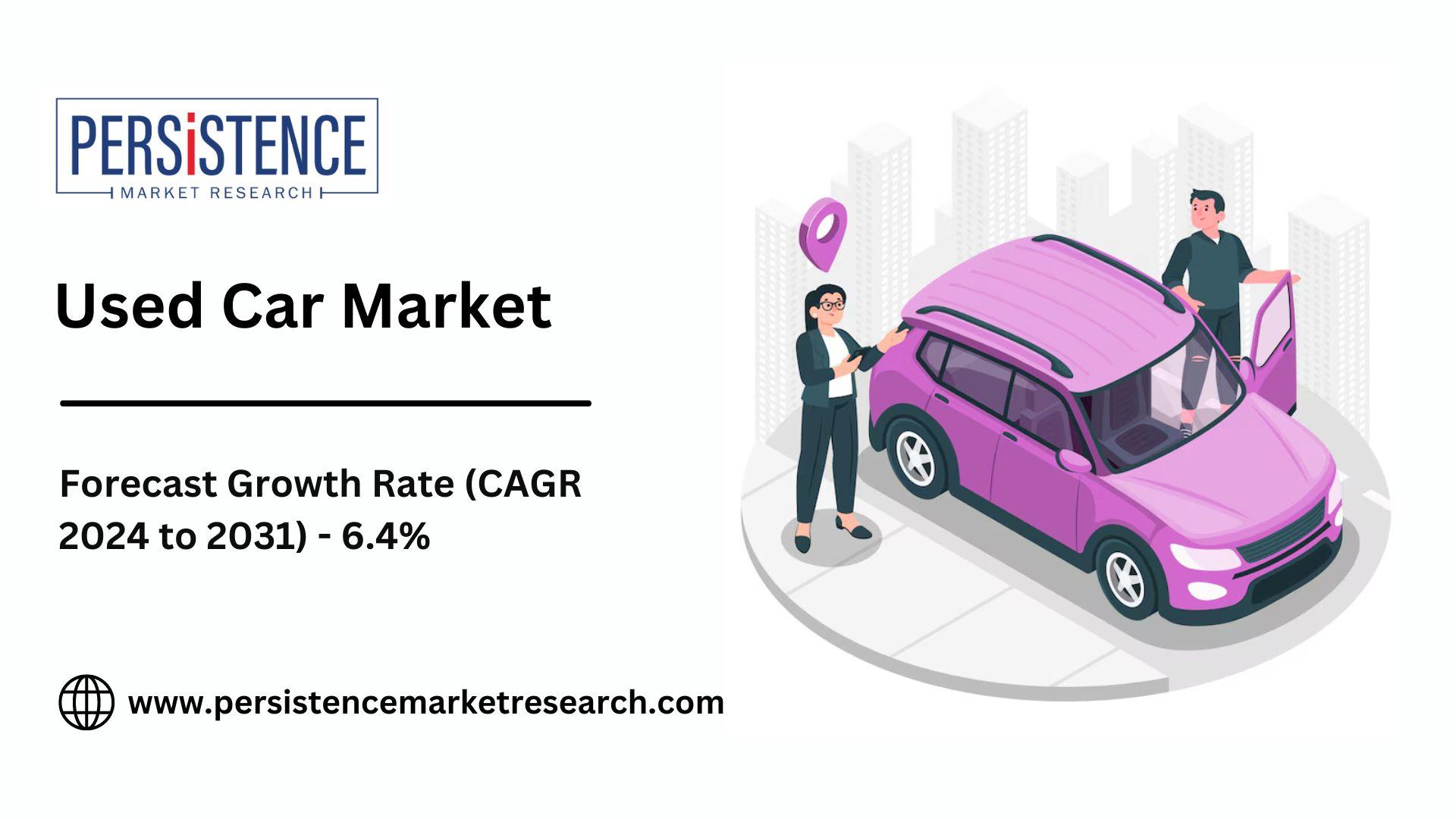The used car market is projected to reach a valuation of US$2.7 trillion by 2031, growing at a CAGR of 6.4% from 2024 to 2031. Driven by changing consumer preferences, especially towards more affordable options amidst rising new car prices, the market is expanding significantly. North America leads this sector, accounting for approximately 38% of global revenue, while hatchbacks dominate as the most popular used vehicles, capturing nearly 48% of the market share. Digitalization is transforming the industry, enhancing the purchasing process through online platforms. With 120.3 million units shipped in 2023, the market reflects a robust demand as more consumers opt for used cars due to budget constraints and a growing preference for personal vehicle ownership post-pandemic.
The used car market has become increasingly competitive, with various key players employing strategic moves to enhance their market positions and adapt to changing consumer preferences. Here are some significant strategies being employed by major players in the used car market:
1. Expansion of Online Platforms
- Digital Retailing: Key players like Carvana and Vroom have transformed the used car buying experience by offering a fully online purchasing process, allowing customers to browse, finance, and complete transactions digitally. This shift caters to consumers seeking convenience and efficiency.
- Mobile Apps: Many dealerships are developing mobile applications to facilitate car searches, financing options, and appointment scheduling, enhancing customer engagement and streamlining the buying process.
2. Enhanced Vehicle Inspection and Certification Programs
- Quality Assurance: Players such as CarMax and AutoNation have implemented rigorous inspection and certification processes for their used vehicles. This approach builds consumer trust by ensuring that vehicles meet high-quality standards and reduces the risk of post-purchase issues.
- Extended Warranties: Offering extended warranties and service contracts helps alleviate buyer concerns regarding potential repair costs, making used vehicles more appealing.
3. Leveraging Data Analytics
- Market Insights: Companies are increasingly using data analytics to understand market trends, customer preferences, and pricing strategies. By analyzing consumer behavior and sales patterns, key players can make informed decisions about inventory management and pricing.
- Targeted Marketing: Data-driven marketing allows businesses to create personalized marketing campaigns that target specific consumer segments, improving conversion rates and customer satisfaction.
4. Partnerships and Collaborations
- Collaborative Efforts: Strategic partnerships with financial institutions and technology companies enable used car dealerships to offer competitive financing options and enhance their online platforms. For example, partnerships with fintech firms can streamline loan approvals and provide consumers with tailored financing solutions.
- E-commerce Integrations: Collaborating with online marketplaces and classified platforms expands reach and visibility, allowing dealerships to attract a larger audience.
5. Focus on Sustainability and Electric Vehicles (EVs)
- EV Offerings: As consumer interest in electric vehicles grows, key players are expanding their used car inventories to include EVs. This shift caters to environmentally conscious buyers and positions dealerships as leaders in the sustainable transportation market.
- Sustainable Practices: Implementing eco-friendly practices in operations and promoting electric and hybrid vehicles can enhance brand reputation and attract a niche market.
6. Customer Experience Enhancements
- Virtual Showrooms: Key players are investing in virtual reality and augmented reality technologies to create immersive online showrooms, allowing customers to explore vehicles virtually before making a purchase.
- Customer-Centric Policies: Offering flexible return policies, personalized customer service, and seamless post-purchase support can significantly improve customer satisfaction and loyalty.
7. Diversified Inventory and Financing Options
- Wider Selection: Expanding inventory to include a diverse range of vehicle types, brands, and price points helps attract a broader audience. Key players are increasingly focusing on certified pre-owned vehicles, which offer a balance of quality and affordability.
- Flexible Financing Solutions: Providing various financing options, including lease-to-own programs and competitive interest rates, allows customers to choose solutions that fit their budgets and preferences.
8. Utilization of Social Media and Influencer Marketing
- Social Media Campaigns: Leveraging platforms like Instagram, Facebook, and TikTok for targeted advertising and promotions helps engage younger consumers and build brand awareness.
- Influencer Partnerships: Collaborating with automotive influencers and content creators can enhance credibility and reach, effectively promoting vehicles to their followers.
9. Investment in Technology and Innovation
- AI and Machine Learning: Utilizing artificial intelligence to optimize pricing, inventory management, and customer service processes can enhance operational efficiency and improve customer experiences.
- Blockchain for Transparency: Some players are exploring blockchain technology to enhance transparency in vehicle history reporting, helping build consumer trust in the buying process.
Conclusion
Strategic moves by key players in the used car market are reshaping the industry landscape. By focusing on online platforms, data-driven insights, customer experience, and sustainability, these companies are positioning themselves to meet the evolving demands of consumers. As the market continues to grow and change, adaptability and innovation will be crucial for success in this competitive environment.



